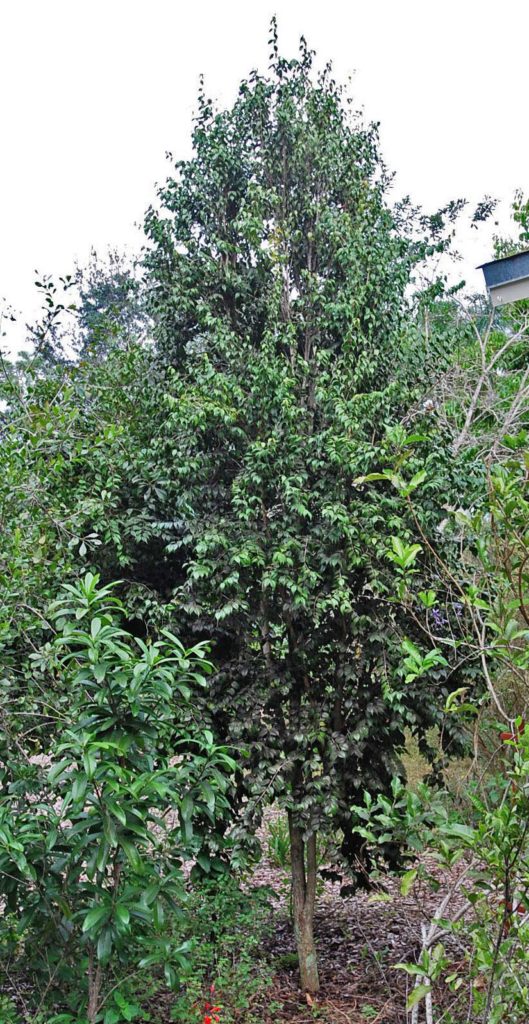
Redberry Stopper
Eugenia confusa
Redberry Stopper is the most beautiful of all the stoppers. The one to two inch dark green leathery leaves have a long drip tip that makes this tree seem tropical.
It can be found naturally from the Keys to Brickell Hammock and then on Sewell’s Point in Martin county. It may not occur there anymore due to development.
This is a narrow tree that may grow to thirty feet, but is usually 20 feet or less. It fits into a tight spot near the house and mixes well with other plants. This makes a great specimen for the front yard.
The small white flowers bloom in clusters and smell sweet. The pea sized berry is bright orange, sweet and attracts many birds that seem to take turns while feeding.
Don’t worry about seedlings coming up everywhere. Few seeds germinate, and if they do, the growth is very slow at one inch per year the first to third year and just a few inches a year after that. An eight foot tree may be ten or more years old.
Soil should be full of organic matter and mixed with high grade fertilizer containing micronutrients. When planting, make sure that the roots are carefully pulled apart to upset circling roots.
Salt tolerance is low, but drought tolerance is high once fully established. Plant well back from the ocean. If you visit “Vizcaya” in Miami, you will see many of these beautiful trees in the parking area. Check out parks in the vicinity and you will find some real specimens.
Redberry Stopper is great used alone, yet it is beautiful planted with other trees and tall shrubs. These include Paradise Tree, Gumbo Limbo, Pigeon Plum, Marlberry, Simpson, Red, Spanish and White Stoppers, Soldierwood, Cinnamon Bark, Krug’s Holly, West Indian Cherry, Bahama Strongbark, Crabwood and Milkbark.
The understory can be any combination of Shiny Wild Coffee kept low, Bahama Wild Coffee, Snowberry, Beautyberry, Coontie, Beach Creeper, Key Thatch and Silver Palms, Native Plumbago and wildflowers.